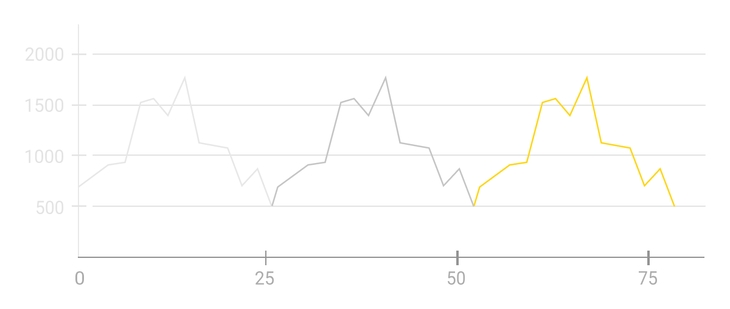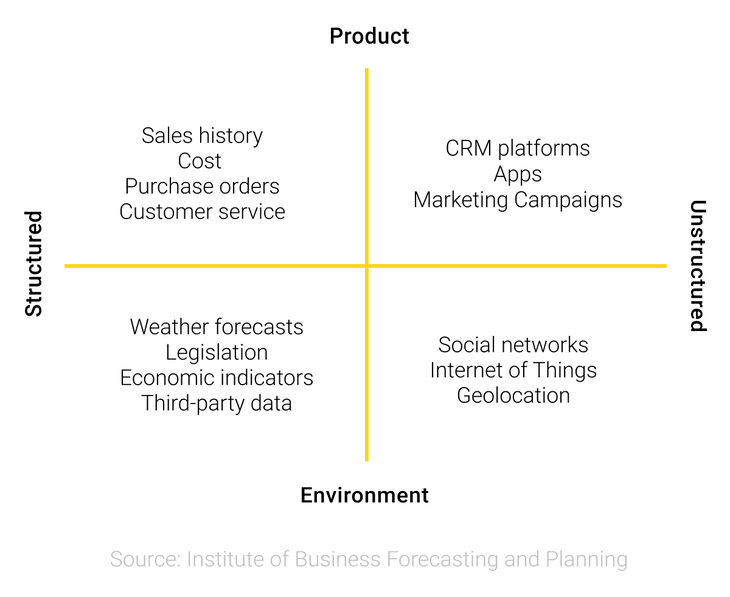- Definition
- The difference from traditional methods of analysis
- The tools of predictive analytics eCommerce benefits from
- 1. Build effective advertising campaigns
- 2. Improve pricing
- 3. Increase sales
- 4. Managing resources better
- 5. Reduce the incidence of fraud
- How to integrate predictive analytics into your processes
- Conclusion
Several years ago, the UK's National Health Service's blood donation agencies switched to predictive analytics software. Better prediction of patient blood needs has enabled hospitals to cut transportation costs fivefold. More importantly, warehouses were able to decrease the wastage of this perishable biological material by 30%. In such a case, accurate demand forecasting means saving lives. And, although this forecasting is not always so critically indispensable, it is essential in many areas. What are the properties of predictive analytics eCommerce benefits from? What impact does it have on revenue and sales? How can companies apply these technologies? Read more in our article.
Definition
Predictive analytics is a software analysis of existing information to make quantitative or qualitative forecasts for the future. In such calculations, the program uses statistical data along with ML algorithms. How has predictive analytics improved eCommerce? Well, it estimates the demand, classifies the audience, and predicts customer behavior. That is possible by analyzing the actions of consumers in the past, their personal information, and external data from various sources.
The difference from traditional methods of analysis
The prerequisite of traditional calculations is cyclicality. This means that the scenarios repeat at regular intervals. The calculation results can be presented as follows:
 Traditional methods are suitable for long-term forecasting or products with a rich sales history and established demand.
Traditional methods are suitable for long-term forecasting or products with a rich sales history and established demand.
Unlike statistical methods, predictive analytics is used when there is no stability. This approach is well-suited for short-term and medium-term forecasts. For example, the calculation is performed for:
- a new product with no sales history;
- goods with no constant demand (seasonal clothing, sports equipment, umbrellas, etc.);
- items that are only popular for a short period (for example, fashionable clothes).
Another distinguishing feature of predictive analytics is the use of a large amount of information from various sources. These systems don't rely simply on data about the product itself - such data as its cost, purchases, sales, as well as information from customer service. It also leverages the data collected from CRM platforms, social media, and apps. Some external factors influence the results of the calculations as well, such as weather forecasts, legislation, economic indicators, holidays, and data from third parties.
 It stands to mention that the program is fueled by ML. The flexible systems are self-learning and adapt to a rapidly changing environment. This ability of software to find relationships in seemingly unrelated streams of data makes it an excellent assistant for calculations in complex and unpredictable situations on the market.
It stands to mention that the program is fueled by ML. The flexible systems are self-learning and adapt to a rapidly changing environment. This ability of software to find relationships in seemingly unrelated streams of data makes it an excellent assistant for calculations in complex and unpredictable situations on the market.
The tools of predictive analytics eCommerce benefits from
The ability of a business to anticipate future events is one of the factors for its success. With this tool, the companies predict demand. The companies can also foresee the buyers’ actions and influence them at the right moment by building their marketing campaigns accordingly. Predictive analytics tools enable companies to:
1. Build effective advertising campaigns
Do you know that up to half of all ad campaigns don't bring the desired results? Predictive analytics estimates the interaction of clients with the brand based on many factors. They are the history of past purchases, the rating given to products, navigation on the store's website, subscription to newsletters, time to purchase, and more. Then, the system anticipates further actions of buyers. This allows businesses to:
- divide the audience into groups and send each group personalized advertising messages;
- improve the interaction of visitors with the site, including the modification of pages in real time for each specific buyer;
- provide the best customer support by anticipating visitors' questions and concerns.
2. Improve pricing
Airlines are perhaps the best example of what flexible pricing is. Tickets for the same flight can vary by hundreds of dollars.
By using predictive analytics tools for e-Commerce, companies can do the same. They can adjust their pricing based on buyers' actions and their personal data, such as country of residence, as well as on the real cost of goods. For example, they can offer a discount to some groups of customers or, conversely, raise the price. At the same time, the calculations made by the program serve as a guarantee that the visitor will still complete the transaction with the price set for them.
3. Increase sales
Anticipating customer desires, optimal pricing, and personalized marketing campaigns inevitably drive sales. By analyzing the previous purchases of visitors, the system can automatically offer related products or the products that are the most interesting to your audience.
4. Managing resources better
Companies will be able to save a lot of money by abandoning the purchase of products which will not be in demand in the short term. This approach will help to avoid the spoilage of goods and unnecessary costs for their transportation and storage.
5. Reduce the incidence of fraud
Since the system studies the behavior of buyers on the site and their payment history, it can recognize suspicious actions. This leads to a decrease in the level of cybercrime, which means more security for your business and customers.
How to integrate predictive analytics into your processes
To apply the specified technology, a company is recommended to carry out preparatory work and ensure the availability of qualified personnel.
First of all, managers need to determine which indicators and processes require a forecast. This allows data analysts to focus on gathering the right information, which is the longest stage in the entire process. After all, the only way to achieve accurate calculations is to use large amounts of high-quality data. Then, the data analysts or employees who understand both the information itself and the goals of the business build an analysis model.
Next, IT specialists configure and run the program. You can take advantage of ready-made solutions offered by providers of eCommerce platforms. Or you can order software that is fully adapted to your processes.
Finally, your experts will need to interpret and apply the results obtained.
Conclusion
Predictive analytics gives your business a significant competitive advantage. However, despite all its power and AI-driven processes, you cannot pin all your hopes on it alone. Only the right combination of your current methods, predictive analytics, and the hard work of marketers, the IT department, and other experts will help you succeed.
Andersen offers software development with powerful eCommerce tools. Contact us for a consultation and benefit from disruptive technology today.









